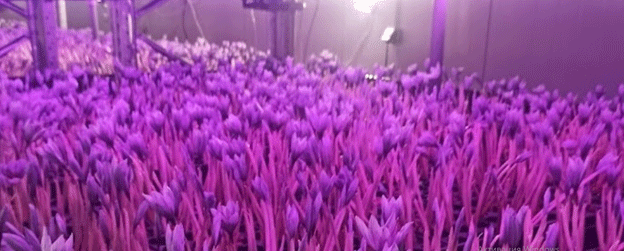The agricultural industry faces growing challenges, from unpredictable climate changes to soil degradation and increasing global food demand. To address these issues, innovators like Vivek Raj are leading the charge in developing sustainable, high-efficiency farming techniques. Raj has demonstrated that indoor farming, particularly using hydroponic and aeroponic systems, can revolutionize how we cultivate high-value crops like saffron, herbs, and medicinal plants. His work highlights the power of technology in reshaping agriculture to ensure food security and environmental sustainability.
Vivek Raj’s journey into hydroponics began in 2014, recognizing that controlled-environment agriculture could mitigate many of the challenges faced by traditional farming. Hydroponics, a method of growing plants using nutrient-rich water instead of soil, and aeroponics, which keeps plant roots suspended in the air and misted with nutrients, allow for precise control over plant growth conditions. This controlled environment reduces the impact of pests, diseases, and unpredictable weather, providing farmers with a reliable and sustainable method to grow crops year-round.
Raj has focused his efforts on saffron, a highly valuable spice traditionally grown in regions such as Kashmir and Iran. By replicating the environmental conditions saffron requires—such as cool temperatures and specific humidity levels—Raj has successfully grown saffron hydroponically in Indiana, United States. His AI-powered system controls factors like temperature, light, and nutrient delivery, ensuring that each plant receives optimal care without waste. The results have been impressive, with trial runs showing up to a 300% profit margin compared to traditional farming methods.
One of the major challenges for saffron cultivation is that it typically requires very specific conditions, including a cooler climate and well-drained soil. By growing saffron indoors, Raj can recreate these conditions regardless of external weather patterns, ensuring consistent yields and quality. His facility maintains day temperatures between 15°C and 18°C and night temperatures as low as 4°C, similar to Kashmir’s natural environment. Full-spectrum LED lighting simulates autumn sunlight, and AI-driven systems provide the exact mix of nutrients needed for optimal growth.
The advantages of this approach are clear: hydroponic saffron is grown in a sterile environment, free from the contaminants and pollutants that often affect field-grown saffron. The absence of soil means that no harmful chemicals, such as pesticides or herbicides, are required, resulting in a cleaner, more organic product. Raj’s saffron has already reached a select group of clients, with overwhelmingly positive feedback. As his operation scales, he plans to meet growing global demand by 2026, targeting both local and international markets.
In addition to saffron, Raj’s indoor farming techniques are being applied to other high-value crops like spices and medicinal plants, which also benefit from the precise control offered by hydroponic and aeroponic systems. His patent for a smart LED system, filed in 2021, integrates artificial intelligence and machine learning to adjust environmental variables like light and humidity in real-time, making indoor farming more scalable and efficient.
While Raj’s saffron project in Indiana has garnered international attention, he is also launching a similar initiative in Karnataka, India. By bringing hydroponic farming to India, Raj hopes to replicate his success and contribute to the country’s agricultural innovation. India, with its increasing demand for high-value crops and its diverse agricultural needs, presents a significant opportunity for Raj’s techniques to thrive.
This approach to farming not only addresses the limitations of traditional agriculture but also opens the door for farmers to grow crops in regions where land and water resources are scarce. Hydroponics and aeroponics use significantly less water than conventional farming and eliminate the need for large plots of fertile land. As climate change continues to strain the agricultural sector, these techniques offer a way forward, allowing farmers to adapt to new challenges while maintaining high productivity.
Vivek Raj’s use of hydroponic and AI-driven technologies is transforming agriculture by offering a sustainable, scalable solution for cultivating high-value crops like saffron. His work demonstrates how controlled-environment farming can overcome traditional limitations such as land availability, water usage, and climate unpredictability. As we look to the future of agriculture, these innovations will be crucial for ensuring food security and supporting global demand for premium products.










